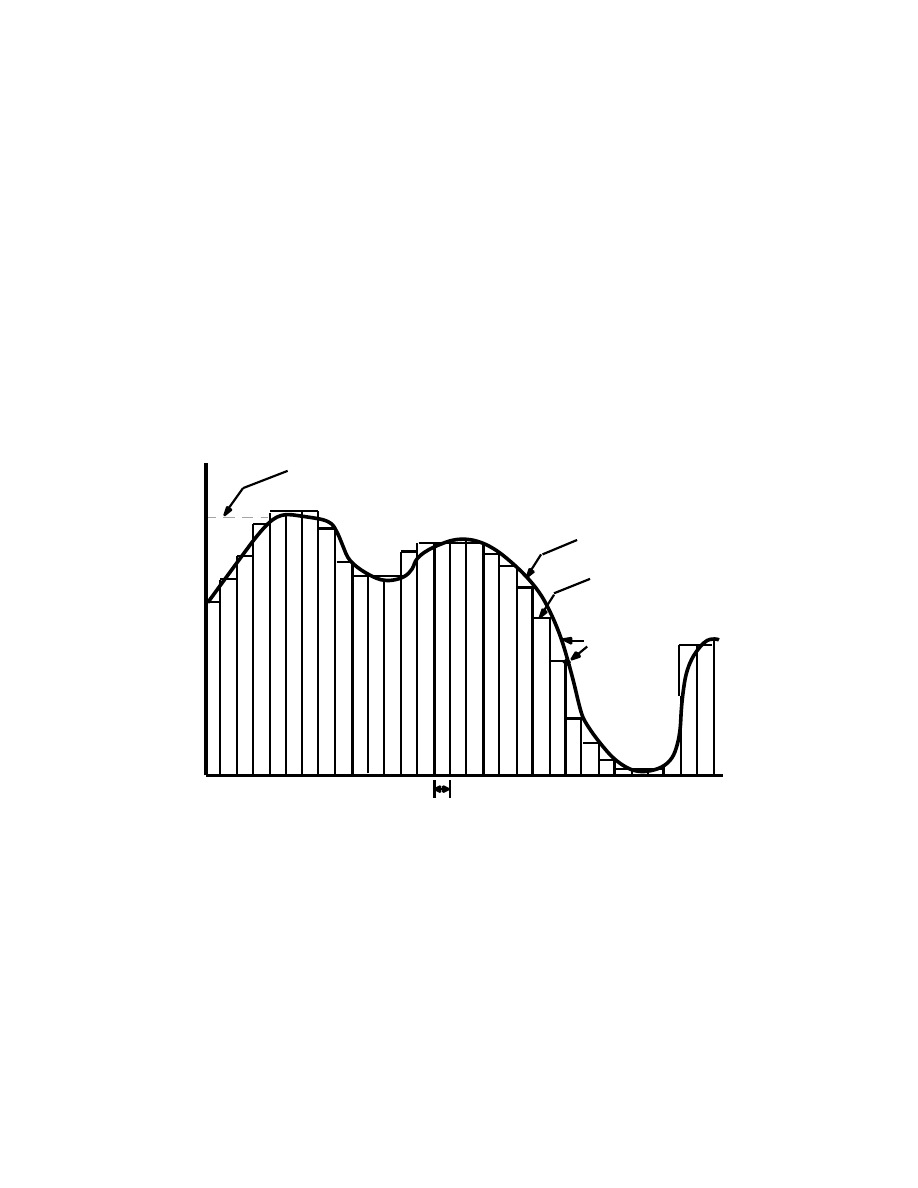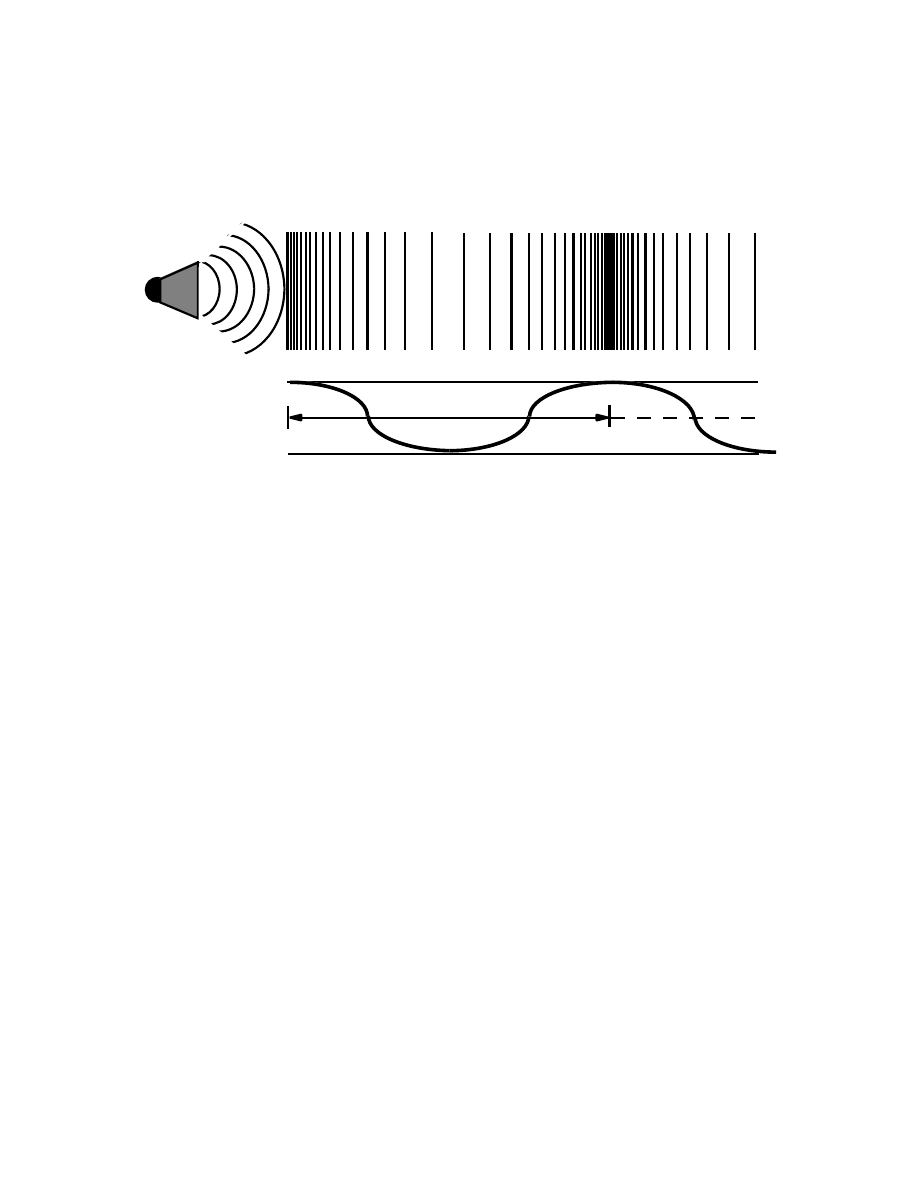ВУЗ: Казахская Национальная Академия Искусств им. Т. Жургенова
Категория: Учебное пособие
Дисциплина: Не указана
Добавлен: 03.02.2019
Просмотров: 12345
Скачиваний: 6

Q
quad track: A track negative, and any release prints made from the track negative, that contains
all three digital sound formats: Dolby Digital, DTS, and SDDS, plus a standard SVA analog
track.
quality factor: See Q.
quadruplex recorder: A VTR recording configuration in which four heads are mounted
around a wheel that turns in contact with 2” tape. This system has largely been replaced by
helical scan formats.
quantization: (1) The representation of an analog signal by a vector of discrete values. The
signal, after quantization, has a stepped shape rather than its original continuous curve, and
the difference between this and the original signal is quantization error. See granulation, PCM,
quantization noise. (2) A function found on sequencers and drum machines that causes notes
whose start time does not correspond to the beginning of a beat to be rounded off to the near-
est rhythmic value. See percentage quantization.
Volts
Sample Number
1/T = Sampling Rate
Instantaneous Value of
Signal
at Sampling Time
Amplitude
Analog Signal
Quantization
Error
Quantized
Sample
Signal
Quantization
7
6
4
5
3
2
0
1
1 2 3 4 5 6 7 8 9 10
T
e
30
20
quantization distortion: See granulation.
quantization error: The difference between the actual analog value at the sample time and the
nearest quantized (digitally encoded) value is called quantization error. At worst, the quan-
tized value encoded will be no greater than one-half increment away from the actual analog
value. Quantization error is related to the S/N ratio and the maximum number of quantization
increments is related to dynamic range. See bit depth.

Q
quantization noise: One of the types of error introduced into an analog audio signal by en-
coding it in digital form. The digital equivalent of tape hiss, quantization noise is caused by
the small differences between the actual amplitudes of the points being sampled and the bit
depth of the A/D converter. In the quantization of a sine wave whose frequency is a submultiple
of the sampling frequency, the error will have a definite pattern which repeats at the frequency
of the signal, having a frequency content consisting of multiples of this frequency, where it can
be considered as harmonic distortion rather than noise. In music, however, the signal is con-
stantly changing and no such regularity exists, resulting in quantization error, producing wide-
band noise, called quantization noise. See granulation.
quantization strength: See percentage quantization, quantization(2).
quantize: To produce an output in discrete steps. See quantization(2).
quantizing increments: (1) The total number of stepped levels, from noise floor to saturation,
that an A/D has available for assignment of the continuously varying analog input voltage
with each sample taken. For example, if each sample has a bit depth of 10, there will be 2
10
, or
1,024, quantizing increments. (2) The voltage or decibel difference between any particular
quantizing step and the next step higher or lower. In a system with 2
10
, or 1,024 discrete steps,
if signal voltage from noise level to saturation varies from 0.0V to 1.0V, each quantizing
increment will correspond to about 0.001V. See dynamic range, sound pressure level.
quarter track: Sometimes called a four-track, refers to most home-type, reel-to-reel tape record-
ers which use one-fourth the width of the tape for each recorded track, allowing stereo signals
to be recorded in both directions, doubling the recording time. Professional stereo tape re-
corders use one-half the tape for each track, resulting in better fidelity and reduced noise level.
See magnetic tape. See also half track, two-track.
quarter-wavelength rule: If a wall is a node, then the nearest other node at any frequency will
be
1
2
(
wavelength) away from the wall. Given this, the antinode is midway between those two
points, or
1
4
(
wavelength) away from the wall, for any given frequency. So, for example, if you
want to filter out 60Hz, divide 18’ (the wavelength of 60Hz) by 4 = 4’6” and hang a thin layer
of frictional material (such as fiberglass or acoustic foam) at that distance from the wall(s) and
floor and ceiling.
quasi-balanced: See floating unbalanced output.
QUERTY: The usual typewriter keyboard, the same design used on computer keyboards,
named after the characters which comprise the left-most letters of the top row, just under the
numerals. While this arrangement of letterson the keyboard was designed a century ago to
slow down the typing rate of agile typists so that the mechanical keys did not collide and
interlock, the format is so ubiquitious that it has made the transition to the electronic computer
keyboard, despite attempts to rearrange the keys to allow entry by the fastest possible fingers.

Q
QuickTime: A software multimedia environment developed by Apple Computer, running on
the Mac or under Windows™. QuickTime enables the creation and playback of QuickTime
movies featuring full-motion video, MIDI tracks and 16-bit ADPCM audio. However, Quick-
Time Movies (documents in QuickTime format) do not need to include pictures, and are a
good way to distribute audio files. It is possible to import an AIFF, SND, or SoundEdit file
into a QuickTime editing program, such as Adobe Premiere, and save the file as a QuickTime
Movie, supported by a number of audio applications, including SoundEdit 16, Deck II, Peak,
and Audioshop.
quiescent noise: (1) See noise floor. (2) The combined intrinsic noise produced by all sound re-
inforcement devices, plus all extrinsic noise present in the listening space, such as HVAC
equipment, traffic noise, measured when the listening/recording space is empty. Sometimes
used as a synonym for noise floor, confusing everyone.

R
rack: A type of shelving, usually with enclosed sides and back, to which audio components
can be attached vertically, one on top of the other. Components are normally screwed into
front-mounted, tapped metal strips with holes which are spaced so as to accommodate the
height of devices of various U-sizes. Racks are usually 19” wide and have their height de-
nominated in U-units.
radiation impedance: The acoustic impedance that acts as a load on a loudspeaker, opposing
the motion of the cone.
radiation pattern: (1) The polar pattern that graphs a loudspeaker’s directional characteristics
for a group of specific test frequencies. (2) The three-dimensional graph of the intensity with
which any sound source emits various frequencies at all angles around itself.
radio frequency (RF): An alternating current or voltage having a frequency above about
100kHz, so-called because these frequencies are radiated as electromagnetic waves by radio
and television, and as high as 30GHz (30,000 MHz). The constant frequency of the carrier wave
(the frequency which you tune into) falls within this range. This is then modulated by the audio
(or other) signal, according to some process such as AM or FM.
radio microphone: A mic with a built-in RF transmitter used instead of a cable connection to
give a performer increased mobility. A receiver system picks up the transmitted signal for
distribution to a PA, etc.
ramp wave: See sawtooth wave.
random access: Storage systems where data may be stored and accessed in any order, inde-
pendent of the ordinal position of the data when it was originally recorded. This is the oppo-
site of linear(3) access, or linear recording media such as magnetic tape which necessarily pre-
serves the sequential relation of the data as it is recorded, and depends on this sequential rela-
tion for accurate playback. See non-linear recording.
random noise: Sound where there is no predictable relationship between the frequency or
amplitude of the waveform over time. See white noise, pink noise.

R
rarefaction: The spreading apart of air molecules which lowers the local air pressure, during
the second half of each complete cycle of a sound wave. This corresponds to the portion of the
wave that appears below the x-axis when graphed. The opposite of compression.
Wavelength
Rarefaction
Compression
Pressure
Along
Wavefront
+
-
Sound
Source
Rarefaction and Compression of a Sound Wave
raster: The characteristic patterns of horizontal lines formed by the scanning beam of the TV
picture tube. Also, the actual electronic circuit that creates the scanning spot that traces these
lines on the TV screen.
rate: In a digital delay or flanger, a circuit and control that enable varying of the length of time
during which the depth circuit completes one full increase or decrease cycle of the nominal de-
lay time. To the ear, the rate control varies the speed of the apparent vibrato added to the input
signal by the depth circuitry.
rate control: An envelope parameter which controls the rate or timing of certain synthesizer
actions, such as the attack, decay and release portions of an ADSR envelope. Compare with
level control.
rated bandwidth: The frequency range, normally 20Hz-2kHz, over which the performance of
an audio device is rated with respect to specification characteristics such as power output band-
width, harmonic distortion, etc.
rated load: The load impedance into which a power amplifier or loudspeaker is designed to
operate safely, and upon which other rated characteristics are based. See power bandwidth.
RCA connector: See phono connector.
RCH
: